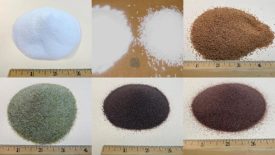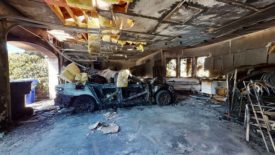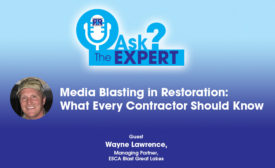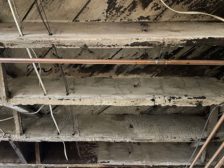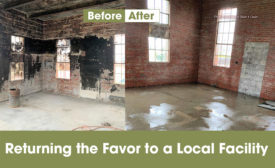Home » Keywords » media blasting
Items Tagged with 'media blasting'
ARTICLES
Media Blasting in Restoration: What Every Contractor Should Know
Ask the Expert
October 14, 2021
Get our new eMagazine delivered to your inbox every month.
Stay in the know on the latest disaster restoration and remediation trends.
SUBSCRIBE TODAY!Copyright ©2022. All Rights Reserved BNP Media.
Design, CMS, Hosting & Web Development :: ePublishing
